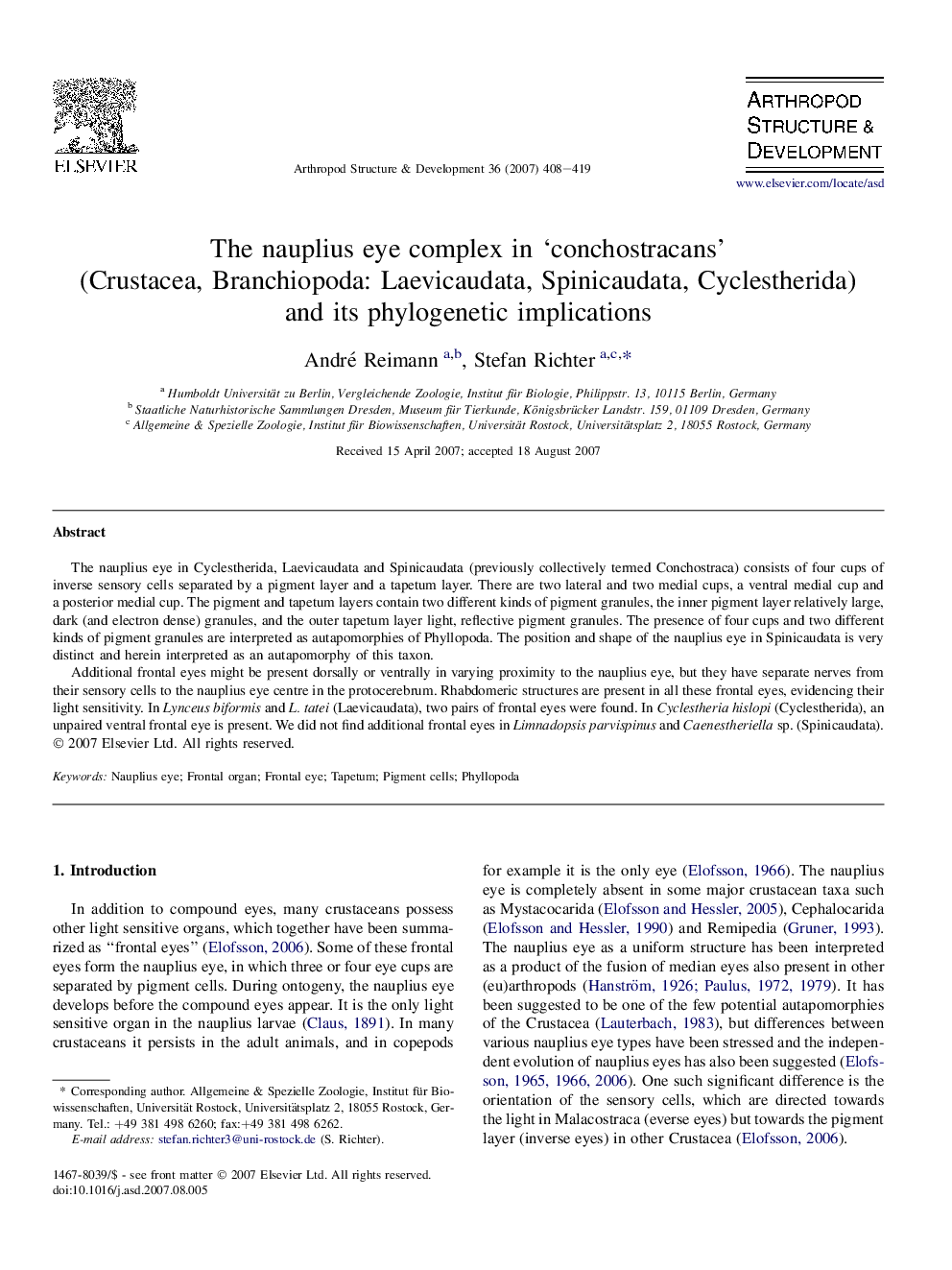| Article ID | Journal | Published Year | Pages | File Type |
|---|---|---|---|---|
| 2779021 | Arthropod Structure & Development | 2007 | 12 Pages |
The nauplius eye in Cyclestherida, Laevicaudata and Spinicaudata (previously collectively termed Conchostraca) consists of four cups of inverse sensory cells separated by a pigment layer and a tapetum layer. There are two lateral and two medial cups, a ventral medial cup and a posterior medial cup. The pigment and tapetum layers contain two different kinds of pigment granules, the inner pigment layer relatively large, dark (and electron dense) granules, and the outer tapetum layer light, reflective pigment granules. The presence of four cups and two different kinds of pigment granules are interpreted as autapomorphies of Phyllopoda. The position and shape of the nauplius eye in Spinicaudata is very distinct and herein interpreted as an autapomorphy of this taxon.Additional frontal eyes might be present dorsally or ventrally in varying proximity to the nauplius eye, but they have separate nerves from their sensory cells to the nauplius eye centre in the protocerebrum. Rhabdomeric structures are present in all these frontal eyes, evidencing their light sensitivity. In Lynceus biformis and L. tatei (Laevicaudata), two pairs of frontal eyes were found. In Cyclestheria hislopi (Cyclestherida), an unpaired ventral frontal eye is present. We did not find additional frontal eyes in Limnadopsis parvispinus and Caenestheriella sp. (Spinicaudata).
